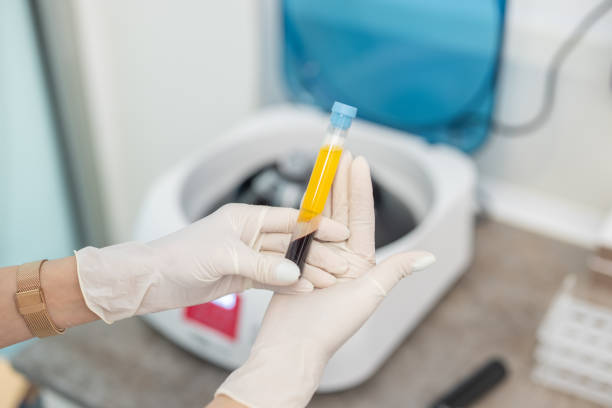
Platelet-rich plasma (PRP) therapy is a newer form of regenerative medicine that uses components of your own blood to promote healing. The procedure involves drawing blood from a patient and processing it to isolate the platelets. Then, the highly concentrated plasma is injected back into a specific area of the patient’s body to promote healing in that location.
If you’re considering PRP therapy, it’s important to understand the benefits, potential side effects, and overall efficacy of PRP therapy. In the following sections, we’ll dive deeper into everything you need to know about this up-and-coming treatment.
What is PRP Therapy?
PRP therapy is a minimally invasive procedure that uses the patient’s platelets, plasma, and growth factors to promote healing. It is a non-surgical treatment option for various musculoskeletal conditions and may even speed up recovery time.
It’s low risk and excellent results make it a popular medical procedure among athletes. It is also ideal for people suffering from chronic pain or injuries or looking to improve natural healing.
Despite its growing popularity, many people are unaware of how PRP therapy works.
That is why exploring the science behind it and understanding how it can treat various musculoskeletal conditions is important.
The Science Behind PRP Therapy
PRP, or platelet-rich plasma, is made of platelets and plasma. Platelets are cells in the bloodstream that play a significant role in clotting and wound healing. They are tiny, disc-shaped cells in the blood and contain growth factors and proteins that help repair and regenerate damaged tissues in the body.
Plasma is the liquid portion of your blood that also contains growth factors than can promote healing.
PRP is created by taking a small amount of blood from the patient. The blood is placed in a centrifuge machine to separate the different components of the blood, and everything except platelets and plasma are removed.PRP is collected and injected into the affected area using ultrasound or X-ray guidance.
The Benefits of PRP Therapy
Even in its early stages, PRP therapy has been proven to be an effective treatment for joint and muscle pain in certain cases. It can also be beneficial for certain chronic illnesses.
PRP therapy provides patients with the following benefits:
Reduced Inflammation
PRP therapy can reduce inflammation in the affected areas, which can help to decrease pain and speed up healing.
Improved Mobility
By reducing pain and swelling, PRP therapy helps improve joint mobility and flexibility.
Tissue Regeneration
The platelets found in PRP contain growth factors that help to stimulate tissue regeneration in the affected area. This can help repair damaged tissues and improve the overall condition of the joint or muscle.
Reduced Need for Surgery
In many cases, PRP therapy can be used as an alternative to surgery for certain conditions. This reduces the risks associated with surgical procedures.
Improved Quality of Life
By reducing pain and inflammation, PRP therapy can help improve a patient’s overall quality of life.
Is PRP Therapy Effective?
PRP therapy is a popular non-surgical treatment option for various musculoskeletal conditions. It is still in its early stages as a therapy, but there is existing evidence showing it may be effective in treating certain conditions.
Numerous clinical studies and research support the effectiveness of PRP therapy. For example, many patients have enjoyed significant pain relief and improved knee function because of the treatment.
PRP therapy has also led to improved mobility in patients with knee osteoarthritis. Likewise, many patients with elbow injuries, such as tennis elbow, experienced reduced pain.
The success rates of PRP therapy can vary depending on:
- The condition being treated
- The severity of the injury
- The patient’s overall health
As it stands now, initial studies on PRP for knee arthritis show a success rate ranging from 60 to 85%. This information is for treating knee osteoarthritis and tennis elbow only.
The Future of PRP Therapy
PRP therapy is a rapidly growing treatment option for various musculoskeletal conditions. Researchers are continually exploring ways to improve its efficacy and make it available to more patients.
There is ongoing research into using PRP therapy in combination with other treatments, such as stem cells and regenerative medicine. The procedure is also proving to be beneficial with other conventional treatments such as physical therapy and medication.
PRP in Austin, TX
If you need PRP in Austin, you can trust All-Star Orthopedics of Austin. We can help you with orthopedic injuries and musculoskeletal pain of all kinds. Dr. Carolyn Hyde is board-certified and fellowship-trained in orthopedic surgery and has been practicing for over 20 years. Call us at (512) 346-4933 or fill out this form to schedule an appointment with us. We look forward to serving you!





